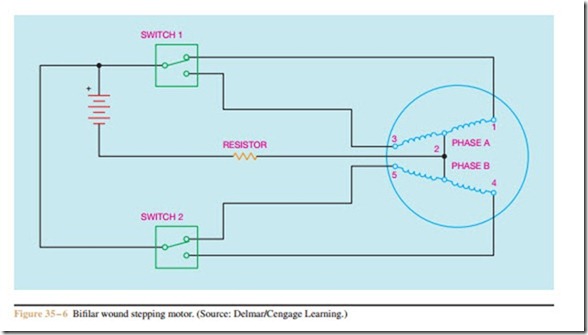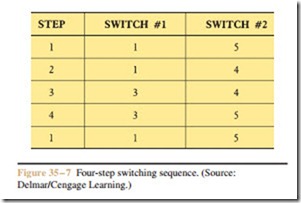Four-Step Switching (Full Stepping)
The switching arrangement shown in Figure 35 – 6 can be used for a four-step sequence. Each time one of the switches changes position, the rotor will advance one- fourth of a tooth. After four steps, the rotor has turned the angular rotation of one “full” tooth. If the rotor and stator have fifty teeth, it will require 200 steps for the motor to rotate one full revolution. This corresponds to an angular rotation of 1.8 degree per step. (360°/200 steps = 1.8° per step.) Figure 35 – 7 illustrates the switch positions for each step.
Related posts:
Audio Amplifiers:Power BJTs vs Power MOSFETs as Amplifier Output Devices
DC Circuits:Series-Parallel Circuits
Inductance:Principles of inductance
Cables and Cable Termination:Cables and Flexible Cords
Environmental sensors:Building acoustics
Devices, symbols, and circuits:Reading and understanding electrical drawings
Other Digital Audio Devices:Video Recorders
CONTROL FUNDAMENTALS
CONTROL FUNDAMENTALS:TIMED TWO-POSITION CONTROL
Terminology and Definitions
Wiring Methods for Lighting Circuits:Fuses
DEVELOPING A WIRING DIAGRAM
POWER ELECTRONICS, RECTIFIERS, AND PULSE-WIDTH MODULATION INVERTERS:PULSE CIRCUITS
GENERATOR INSPECTION AND MAINTENANCE:GENERATOR ROTOR RELIABILITY AND LIFE EXPECTANCY

